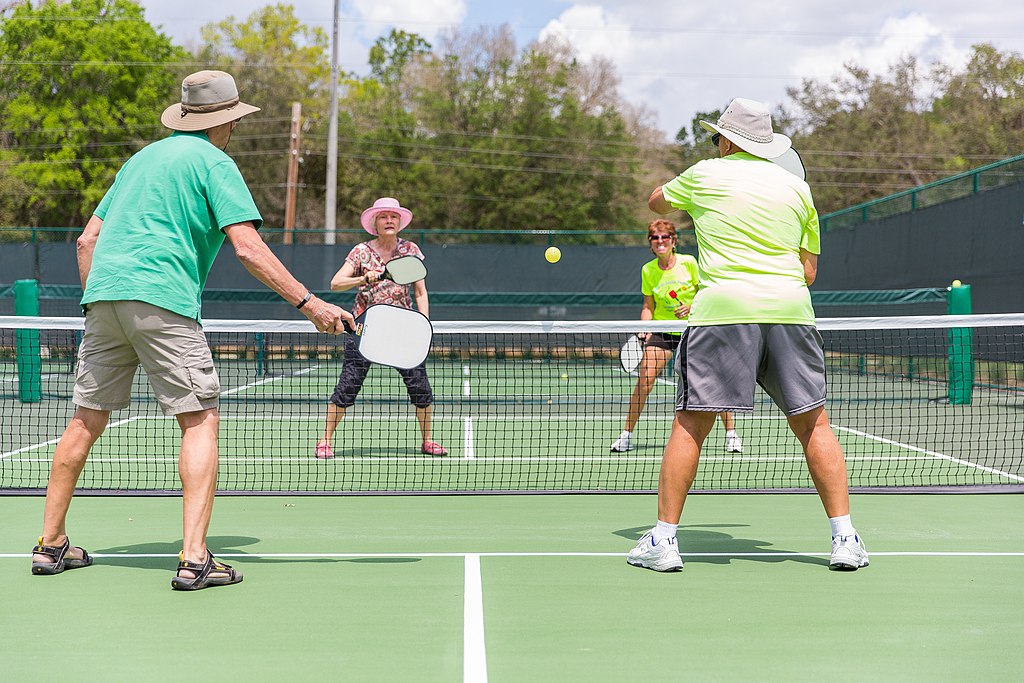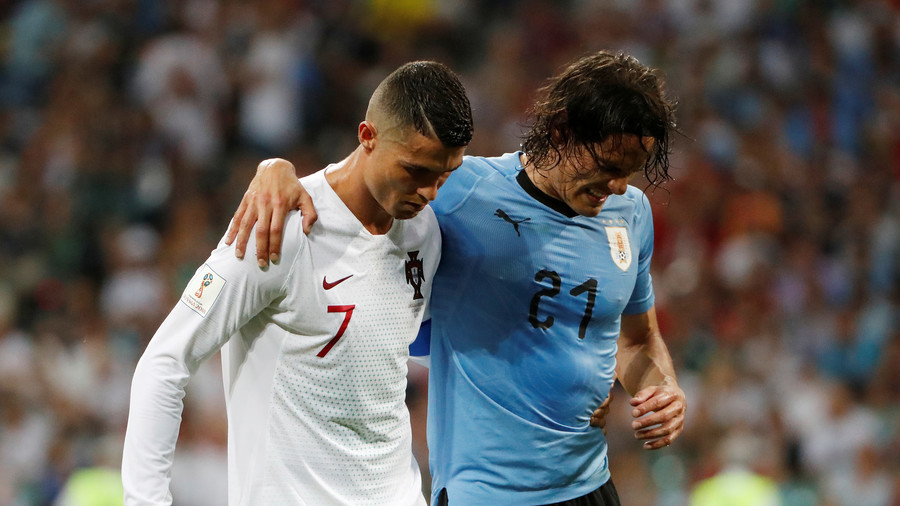
fans of Japan and Senegal mingle, World Cup 2018
(credit: By Wild Child, via Wikimedia Commons)
Political Insights In Sport
In
the past few posts, we’ve discussed ways in which sports and the assumptions
that underlie them can inform our thinking on questions like whether what we
see is real, or just illusion, and whether human beings have free will. The whole
worldview that is implicit in sport affirms that, yes, what our senses show us
of the world is a fairly reliable representation of what is really there, and
yes, we humans do have fairly impressive powers to shape events that are
happening around us and events that are yet to happen. Reality is mostly as we
see, hear, and touch it, and we are, to a fair degree, free to affect how
reality is changing over time. I am confident that the ball is real and that I can
kick it and catch it.
But
there are more interesting philosophical insights to be gained from a close
analysis of sports. For example, the actions we humans take to organize into
larger groups like bands, tribes, and nations, are called “political
activities”. Sports can give us useful insights into how humans organize into
groups.

huddle of AFLW Melbourne players
(credit: Flickerd, via Wikimedia Commons)

huddle of AFLW Melbourne players
(credit: Flickerd, via Wikimedia Commons)
To
begin with, the whole idea of sport has a democratic tone to it. Players who
are forced to play a sport – perhaps because they show an aptitude for the
sport, even if they don’t really like it – will never play as well as players
who choose to pursue the sport, develop their skills, train hard, pay attention
to coaches, etc. All of these are better done by people who choose to play the
particular sport in question.
An athlete may show great aptitude for figure
skating, but if she wants to play hockey and she is forced into figure skating,
in the long haul, she simply will not match the figure skaters who really want
to do double axels. Pressures from her family or nation can’t make up
for her personal reluctance.
Personal autonomy is profoundly important in
sport. Personal autonomy is also a key assumption of pluralistic democracy. It
is not thought of as an inalienable human right in totalitarian, oligarchic, or
theocratic states.
Real
experience of being a member of a successful team also provides evidence that supports
the democratic model of human organization in other ways. Once a player has been
asked to play for a team, and has accepted the invitation, the coaches of that
team immediately begin to plan where and how the player will fit into their overall
strategy.

starting 11, French national team, World Cup 2018
(credit: Кирилл Венедиктов, via Wikimedia Commons)

starting 11, French national team, World Cup 2018
(credit: Кирилл Венедиктов, via Wikimedia Commons)
No team that asks the same kinds of skills and assigns the same
responsibilities to every player is going to be a winning team. Player A may be
a natural scorer who can hit the corners of the goal from long range, but he
may not have the natural shadowing instincts of a good defender. Player B may
be just the opposite: not a great shooter, but skillful at checking other
players who are shooters, repeatedly blocking their best shots. And there are
the players who head the soccer ball well, and the natural goalkeepers who have
lighting quick reflexes, and so on. A winning team almost always is going to
have on it a variety of players with a variety of skills filling a variety of
roles. Diverse talents and roles are cleverly assigned by the smart coaches so that they complement each other. Then they are keenly pursued by
players who have freely chosen to be on this team. This smart coaching is what makes success in sport. In
short, pluralistic democracy works in the sporting world.
And
yes, there are compromises. No individual, no matter how talented, gets to dictate to others on a winning team. Players frequently must choose to contribute
positively to their team by foregoing their own glory and even letting go of
their own sport philosophies in order to fit into the team’s overall game plan.
But
such is life. Adults know there are always compromises that must be made when
one joins a group. The general principles that make participating in a democratic team acceptable to strongly independent individuals include, first, the one that enables individuals to
choose to be in the group, and to leave if they see fit. This first principle is balanced with an implicit second principle that allows for each member of the team to have at least some input into how the team will approach each game and season - training, game plans, and so on. Dictator types of coaches are things of the past in most regions
of the world where sports are played today. They offend players and fans, but most of all, they also lose.

Mount Mercy University men's volleyball coach, Mary Kay van Oort
(credit: Jim Slosiarek, The Gazette, MMU, Feb. 8, 2018)

Mount Mercy University men's volleyball coach, Mary Kay van Oort
(credit: Jim Slosiarek, The Gazette, MMU, Feb. 8, 2018)
A
player is still expected to respect the coach, but coaches also are expected to
listen to, and show respect for, the opinions of the players. And experience has
shown that dictator coaches just aren’t as likely to be winners. Thus, fans and
owners of a team tend to favor the more democratic coach in our times. The
wrangling on a team, like that in a nation, can become tedious, but in democracy, negotiation and compromise are
just life.
The profound thing to see here is that the democratic model works. It
gets results. In sport, it produces winning teams.
These
same democratic principles make a strong nation. Why? Because both teams and
nations must deal with the unpredictable, probability-driven real world. The
best strategy if one wants to succeed in a stochastic world is to join or
create a carefully designed team that maximizes its human resources. For team
or nation, the strategy is the same: a number of different players with varied
skills, each performing the actions for which she/he is best suited as parts of
a well-designed group/community/team that functions smoothly as a unit.
The
Americans are fond of saying, “There is no ‘I’ in ‘team’.” What they mean is
that to make a successful team, players must learn to put aside their love of personal
glory and replace it with a willingness to perform well in the role to which
they have been assigned by the team’s coach. It sounds collectivist, not
democratic, but the key thing to keep in mind is what was said above: on the
best teams, the players choose to be there, and agree freely from their first
day with the team that they will respect other team members and especially
coaches and will cooperate for the common good of the team.
The
element of personal choice is still primary, but personal glory can be consciously set aside by rational people for the good of the larger group, if and when reason dictates that it should be.
There is always a
collective in sport (even athletes in individual sports like boxing or tennis
have coaches behind them), but successful athletes and teams preserve that
element of individual choice. It pervades all that occurs in democratic sport
all the time.
And
now the political insights we obtain from sport get even more fascinating.
I
love to notice in every sport how there is an unspoken agreement between
players on a given team, between members of different teams, between officials,
and even between fans that there are rules for this game, we all know them, we
agree to abide by them, and anyone – player, ref, fan, coach – who willfully
violates those rules, even in principle, is ostracized by all, sometimes even
from the sport entirely, anywhere it is played in organized, sanctioned
matches.
This
understood agreement that everyone involved with the sport will abide by and
respect the rules, customs, and traditions of the sport is a kind of social
contract. Its ultimate aim is to keep contests played under the auspices of
this sport from ever turning into acts of unrestrained violence. Even in the roughest of sports, there are always some acts of violence from which one is
expected to refrain. Even in rugby, one does not head butt opponents, or tackle
them by surprise when they don’t have the ball. And so on.

New Zealand All Blacks rugby team doing haka, 2006
(credit: Sonya & Jason Hills from London, UK, via Wikimedia Commons)
What
is being revealed here is that sports are ritualized forms of war.
Sporting contests are not real wars. Winners go home elated, losers leave the
field or court dejected, but all live to compete another day. Sports allow
humans to release their competitive urges without any competitors using deadly
force.
Even
the gentler sports like baseball, for example, in which players can play a
whole game and never touch an opposing player, have roles in the larger
political picture. Most sports drill young people for combat. Japanese soldiers in the
South Pacific during World War Two found one aspect of fighting Americans
extremely scary. The Japanese soldiers were very frightened by how accurately
Americans could throw a grenade. Baseball.
German
soldiers in WWI found Canadian soldiers’ skill with the bayonet frightening.
The game of hockey, played everywhere by nearly all Canadian boys, leaps to my
mind. The connection seems obvious.
Rugby and football train people for hand to hand combat and for throwing grenades. Tennis builds skills and muscles used in handling swords.
Do
other species engage in ritualized forms of combat that establish territorial
and breeding rights? Absolutely. In fact, most intraspecies violence is limited
so that it rarely if ever results in crippling or deadly damage to one or both combatants.
That would be a foolish waste of the herd, pack, pod, or flock’s resources. So
the bull elk fence and push with their antlers, but they do not kill each other.

bull elk duelling
(credit: http://www.ForestWander.com, via Wikimedia Commons)
There is even a term in Biology for this dominance-setting, controlled aggression. It is called “agonistic” and it is common in the animal world, from insects and shrimp to elephants, but it rarely if ever involves the use of deadly force. Sport is just the human form of the elks' fencing and pushing.
This
thought brings us to some related observations. It was George Orwell in an
essay called “The Sporting Spirit” who noted that sporting competitions are
closely connected to feelings of nationalism, which by the way, is quite a
recent political phenomenon in most parts of the world.
For centuries, people loved their families, then maybe their tribes. But love of ones' country is a recent political invention. It has become a global phenomenon just in the last century or so. As countries rose in importance in people’s lives, and mass media gave governments more power to influence the thoughts of their citizens, feelings of nationalism began to get stoked.
For centuries, people loved their families, then maybe their tribes. But love of ones' country is a recent political invention. It has become a global phenomenon just in the last century or so. As countries rose in importance in people’s lives, and mass media gave governments more power to influence the thoughts of their citizens, feelings of nationalism began to get stoked.
All of this Orwell noted decades ago.
The
fact that we can get so worked up here in Canada over our national hockey team’s
games against the Russian or American national squads, and the British can
invest so much emotion in their national soccer team’s games, the Iranians in
wrestling meets, the Thais in kickboxing, and so on for many other nations,
indicates again that there is something deep going on here. The deep emotions
stirred by sport have a connection to the larger, political picture: sports are
substitutes for war.
Contrary
to Orwell, I find the nationalistic hysteria that sometimes surrounds a
sporting match to be mostly a hopeful sign for our species. Why? Because even
when a contest is called “dirty” and “unfair” by millions of fans, even when
officials seem obviously biased, everyone goes home after the match in tired
but healthy condition and sleeps in her/his bed. Contrast that picture with the
ones we have seen too often of what a battlefield looks like after the battle,
and perhaps you will begin to share my affection for sports.
Finally,
I shall close with one more philosophical insight: the truth of all of the
observations I have presented above also indicates things much deeper and more
hopeful for our species.
If
we can agree that we will try to put a round ball into our opponents’ goal, a
goal that is the exact same size as the one at our end of the field, with any
part of the body except our arms, that we will pursue the ball and not the
opposing players, and that we will all treat each other and the officials with respect, then it seems obvious to me that we could learn a new moral
code.
All
of us.
Learning
a code under which we all could live together and get along would be hard, but not
impossible. Like learning a new sport. How many millions of people around the
world have moved to a new place for work-related reasons, or to retire, and
discovered that actually, yes, they have begun to really enjoy watching soccer or hockey,
or playing tennis, or badminton, or whatever, when they had previously had no
experience in their newfound sporting love?

seniors playing pickleball, Florida, 2017
(credit: The Villages FL , via Wikimedia Commons)

seniors playing pickleball, Florida, 2017
(credit: The Villages FL , via Wikimedia Commons)
Writing
the rules for this new global game is going to be the hard part. If we can get
that code down in a form that the big majority of us can agree on, we can then
begin to teach it to, even program it into, the children. Hard, but not impossible.
And so much better than the alternative of going on with warring.
Sport is
pointing the way. We only need to choose to practice that same spirit of
competition under an agreement to play fair, and we’ll have it.
Business.
Political campaigning. Sport. The Arts. Science. Every arena of human activity.
And an end to war.
In
the shadow of the mushroom cloud, still, have a hope-filled, sporting day.








